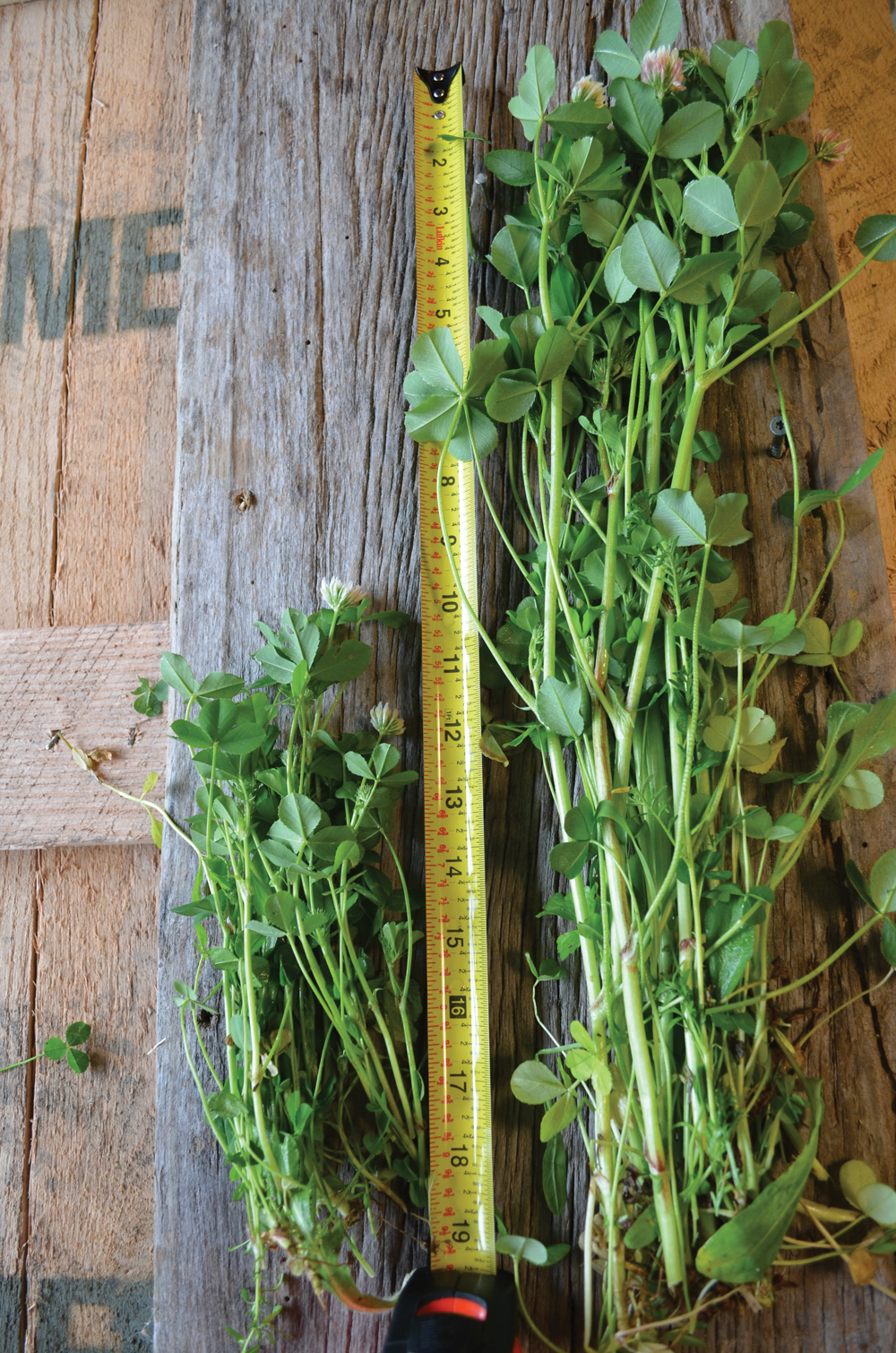Weed competition—the number one problem in perennial food plots.
By this time of the year, most everyone’s hunting season is over or starting to wind down. Not many guys are thinking about growing plots or feeding their deer.
With some nasty weather still possible for the next few weeks, it’s a great time to sit down and start planning for the upcoming growing season. There may be some things you thought of this fall that you would like to accomplish on the property you manage.

Forage production in perennials like clover is dramatically increased when soil pH and nutrients are amended regularly. Photo by Austin Delano.
Taking Care of Your Food Plots
One of the first things I like to do in March is to pull soil samples on my plots. Then, I get them sent in to see if I need to add any lime. I also like to see what fertilizer will be needed for my warm-season annuals. This way, I know what will be planted in late April/early May.
If you had soil samples taken this fall, you will already have an idea of where your plots are in need of lime or nutrients. Have an up-to-date sample of the areas you plan to plant this spring. If the pH is low, have lime spread in the late winter/early spring.
This will give the Ag lime time to start working on the soil for your spring/summer plots. It will also help those fields that are left fallow through the summer. Depending on the size of the screen that the lime is run through at the quarry, the granular consistency of Ag lime can take several months to break down and begin to neutralize the acidity in your soil.
Work Smarter Not Harder
Many of us spend a good deal of time throughout the spring/summer managing and manicuring our perennial clover and chicory plots. If you planted perennials this past fall, be sure and take the time to mow, fertilize, and spray them through the warm season so they will stay weed-free and thriving.
With good maintenance and favorable weather, you can get several years of production from a good perennial. Weed competition is the number one problem in managing perennial food plots. The first month after spring green-up is when you will see the flush of weeds. This includes grasses and broadleaves that start to invade your fields.
“An ounce of prevention is worth a pound of cure.”
Catch these weeds early in the growth cycle. Spraying them while they are young and growing will yield much better results than waiting to spray the weeds when they are more mature. As Ben Franklin said, “An ounce of prevention is worth a pound of cure.”
In the South, you may lose your clover to the hot weather and dry conditions during July and August. However, if these fields are maintained properly through the spring and early summer, they will jump back out from dormancy in late summer/early fall much more quickly. They will be back to that lush field it was in the spring.
Get Prepared Late Winter
Another great time-saver for this time of year is equipment maintenance. Your spray rigs, bush-hogs, tractors, and trailers have been sitting most of the winter. So, it’s a great idea to do some routine maintenance.
Getting your bush-hog blades sharpened and spray rigs calibrated and working properly can be a big time-saver when done ahead of time. You can avoid having to fight leaking hoses, worn-out bearings, and damaged pumps the day you need to be spraying or mowing.
In late winter, I like to get all the fluids changed out on my tractor. It’s important to make sure everything is operating properly.
You can also hook up your spray rig to check clamps and hoses for any possible cracks or leaks. Run clean water through the lines and make sure all nozzles and filters are clean and flowing properly.
Late winter is also the opportune time to go ahead and reserve rented equipment. This includes lime/fertilizer buggies, spray rigs, etc. so you have it available on the dates you need.
